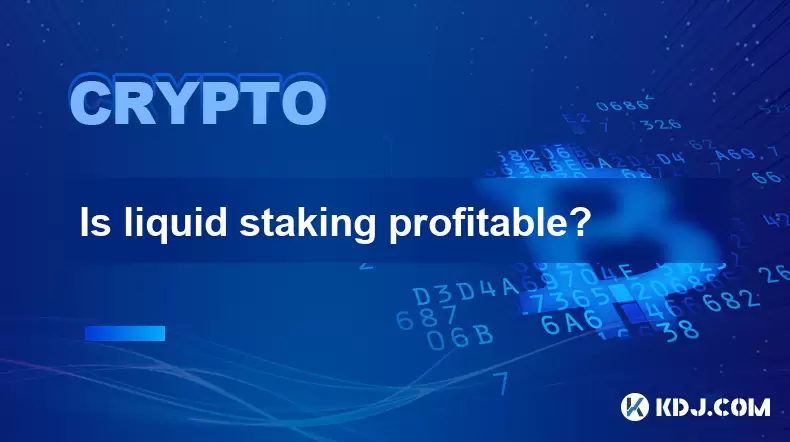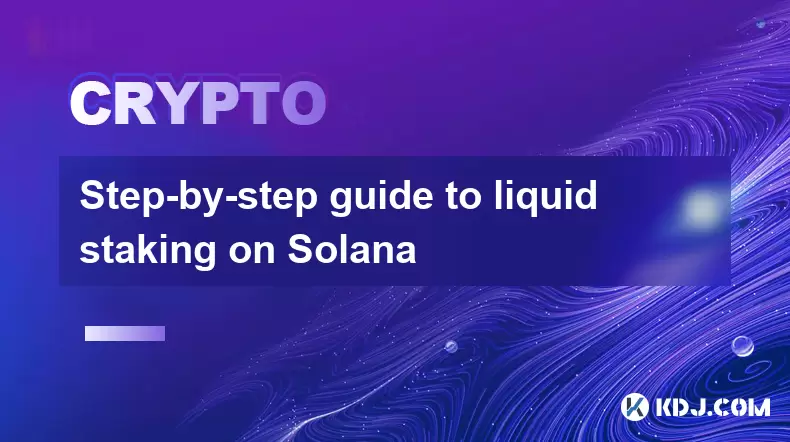-
 Bitcoin
Bitcoin $118900
0.42% -
 Ethereum
Ethereum $3710
-2.88% -
 XRP
XRP $3.513
-2.96% -
 Tether USDt
Tether USDt $1.000
-0.01% -
 Solana
Solana $203.0
3.65% -
 BNB
BNB $765.5
-1.29% -
 USDC
USDC $0.9998
0.00% -
 Dogecoin
Dogecoin $0.2671
-4.18% -
 Cardano
Cardano $0.8817
-3.63% -
 TRON
TRON $0.3139
-0.64% -
 Hyperliquid
Hyperliquid $44.34
-5.45% -
 Stellar
Stellar $0.4637
-4.08% -
 Sui
Sui $3.908
-2.59% -
 Chainlink
Chainlink $19.34
-2.62% -
 Hedera
Hedera $0.2712
-3.77% -
 Avalanche
Avalanche $24.97
-4.13% -
 Bitcoin Cash
Bitcoin Cash $519.8
-1.48% -
 Shiba Inu
Shiba Inu $0.00001518
-3.74% -
 Litecoin
Litecoin $115.6
-2.21% -
 Toncoin
Toncoin $3.460
3.68% -
 UNUS SED LEO
UNUS SED LEO $8.977
-0.07% -
 Polkadot
Polkadot $4.460
-2.96% -
 Uniswap
Uniswap $10.53
-5.43% -
 Ethena USDe
Ethena USDe $1.001
0.01% -
 Monero
Monero $323.6
-0.36% -
 Pepe
Pepe $0.00001379
-2.60% -
 Bitget Token
Bitget Token $4.772
-3.90% -
 Dai
Dai $0.9999
0.00% -
 Aave
Aave $307.5
-6.66% -
 Bittensor
Bittensor $441.8
0.84%
Is liquid staking profitable?
Liquid staking lets users earn rewards on staked crypto while keeping liquidity through tradable tokens like stETH, boosting potential returns via DeFi use.
Jul 22, 2025 at 11:29 pm

Understanding Liquid Staking in the Cryptocurrency Ecosystem
Liquid staking has emerged as a popular innovation in the blockchain and cryptocurrency space, particularly within proof-of-stake (PoS) networks. This mechanism allows users to stake their tokens while retaining liquidity, meaning they can still use their staked assets for other purposes like trading or lending. Unlike traditional staking, where assets are locked for a period, liquid staking introduces tokenized representations of staked assets (e.g., stETH, stSOL) that can be freely traded or used in DeFi protocols.
The core concept of liquid staking revolves around enabling users to earn staking rewards without sacrificing liquidity.
How Liquid Staking Works
When a user engages in liquid staking, they deposit their native tokens (such as ETH or SOL) into a staking pool or protocol. In return, they receive liquid staking derivatives — tokens that represent their staked assets plus any accrued rewards. These derivatives can be utilized in DeFi applications, including yield farming, lending, and decentralized exchanges.
- Deposit native tokens into a liquid staking provider like Lido, Rocket Pool, or Coinbase Liquid Staking.
- Receive liquid staking tokens (e.g., stETH) equivalent to the deposited amount plus future staking rewards.
- Utilize these tokens across DeFi platforms to generate additional yield.
- Earn staking rewards passively while maintaining the ability to trade or use the derivative tokens.
Profitability Factors of Liquid Staking
The profitability of liquid staking depends on multiple factors, including the underlying network's staking yield, the performance of the liquid staking provider, and the DeFi opportunities available for the derivative tokens. It's important to understand that while liquid staking can enhance returns through compounding and yield optimization, it also introduces risks such as smart contract vulnerabilities and slippage in DeFi protocols.
Users must evaluate the total return on investment by combining staking rewards with potential DeFi yields.
Comparing Traditional Staking vs. Liquid Staking Returns
In traditional staking, users lock their tokens and earn a fixed or variable APR based on the network's inflation rate and validator efficiency. Liquid staking offers the same base staking yield, but the added benefit lies in the flexibility to deploy staking derivatives into other income-generating activities.
- Traditional staking may yield 4–8% annually depending on the network.
- Liquid staking can yield similar base returns, with the potential for additional yield through DeFi integration.
- Impermanent loss and slippage in DeFi pools can reduce overall profitability if not managed carefully.
Risks and Considerations in Liquid Staking
While liquid staking can be more profitable than traditional staking, it introduces additional risks that users must account for. These include:
- Smart contract risk – Liquid staking relies heavily on the security and integrity of the protocol’s code.
- Centralization risk – Some providers control a large portion of the network’s staked tokens, potentially impacting decentralization.
- Market risk – Derivative tokens may trade at a discount or premium depending on market sentiment and liquidity conditions.
- Regulatory uncertainty – Regulatory scrutiny may affect how liquid staking derivatives are treated in different jurisdictions.
Understanding and mitigating these risks is crucial for assessing the true profitability of liquid staking strategies.
Case Study: Liquid Staking on Ethereum with Lido
Lido Finance is one of the most prominent liquid staking solutions on Ethereum. Users can deposit ETH and receive stETH, which accrues staking rewards over time. The stETH can then be used in DeFi protocols like Aave or Curve to earn additional yield.
- Staking ETH via Lido currently yields around 4–6% APR.
- Supplying stETH to Aave can generate an additional 2–4% in interest income.
- Liquidity provision on Curve may add another 2–5% in yield, depending on the pool and incentives.
This layered approach can lead to a combined yield of 8–15%, significantly higher than traditional staking alone.
Frequently Asked Questions (FAQ)
- Can I unstake my tokens from a liquid staking provider at any time?
Most liquid staking providers do not allow direct unstaking due to the nature of PoS protocols. However, users can trade their derivative tokens on secondary markets or use protocols like Lido’s withdrawal queue when available. - Are liquid staking derivatives always pegged to the underlying asset?
No, unlike stablecoins, liquid staking derivatives like stETH are not pegged 1:1 in value. Their price can fluctuate based on market demand, smart contract risk perception, and liquidity depth. - Is liquid staking suitable for beginners?
While the process is user-friendly, understanding the risks and opportunities in DeFi is essential. Beginners should start with small amounts and research platforms thoroughly before committing capital. - Do all PoS blockchains support liquid staking?
No, liquid staking is platform-dependent and requires third-party protocols or native implementations. Major chains like Ethereum, Solana, and Cosmos have active liquid staking solutions, but not all PoS networks offer this feature.
Disclaimer:info@kdj.com
The information provided is not trading advice. kdj.com does not assume any responsibility for any investments made based on the information provided in this article. Cryptocurrencies are highly volatile and it is highly recommended that you invest with caution after thorough research!
If you believe that the content used on this website infringes your copyright, please contact us immediately (info@kdj.com) and we will delete it promptly.
- PNC Bank & Coinbase: Banking on Crypto's Future, NYC Style
- 2025-07-23 06:30:12
- Ruvi AI: The Next Avalanche Riding the AI and Blockchain Wave?
- 2025-07-23 06:30:12
- SEC, Bitcoin, and Crypto: Navigating the Wild West of Digital Finance
- 2025-07-23 04:30:12
- BlockDAG Mining Revolution: 10x Rewards and Crypto's Next Big Thing?
- 2025-07-23 06:10:12
- Tyre Legalities, the 20p Test, and Expert Advice: Staying Safe on the Road
- 2025-07-23 04:50:12
- Liberty Head Double Eagle Proofs: A Golden Opportunity?
- 2025-07-23 04:55:12
Related knowledge

Understanding the composition of a liquid staking token's yield
Jul 20,2025 at 09:07am
What Is a Liquid Staking Token?A liquid staking token is a representative asset issued to users who stake their native cryptocurrency on a proof-of-st...

Is it better to stake directly or use a liquid staking service?
Jul 22,2025 at 08:21pm
Understanding the Basics of StakingStaking in the context of blockchain and cryptocurrency refers to the process of locking up digital assets to suppo...

What to do during an LST depeg event
Jul 20,2025 at 04:57pm
Understanding LST Depeg EventsAn LST (Liquid Staking Token) depeg event occurs when the token, which is typically pegged to the value of the underlyin...

Can you provide liquidity with liquid staking tokens?
Jul 22,2025 at 10:22am
Understanding Liquid Staking TokensLiquid staking tokens (LSTs) are derivative tokens that represent staked assets on a proof-of-stake (PoS) blockchai...

What are the best wallets for storing LSTs?
Jul 21,2025 at 03:14pm
Understanding LSTs and the Need for Secure StorageLSTs, or Liquid Staking Tokens, are derivative tokens representing staked assets on a blockchain. Wh...

Step-by-step guide to liquid staking on Solana
Jul 20,2025 at 06:42am
What is Liquid Staking on Solana?Liquid staking is a mechanism that allows users to stake their cryptocurrency while retaining liquidity through the i...

Understanding the composition of a liquid staking token's yield
Jul 20,2025 at 09:07am
What Is a Liquid Staking Token?A liquid staking token is a representative asset issued to users who stake their native cryptocurrency on a proof-of-st...

Is it better to stake directly or use a liquid staking service?
Jul 22,2025 at 08:21pm
Understanding the Basics of StakingStaking in the context of blockchain and cryptocurrency refers to the process of locking up digital assets to suppo...

What to do during an LST depeg event
Jul 20,2025 at 04:57pm
Understanding LST Depeg EventsAn LST (Liquid Staking Token) depeg event occurs when the token, which is typically pegged to the value of the underlyin...

Can you provide liquidity with liquid staking tokens?
Jul 22,2025 at 10:22am
Understanding Liquid Staking TokensLiquid staking tokens (LSTs) are derivative tokens that represent staked assets on a proof-of-stake (PoS) blockchai...

What are the best wallets for storing LSTs?
Jul 21,2025 at 03:14pm
Understanding LSTs and the Need for Secure StorageLSTs, or Liquid Staking Tokens, are derivative tokens representing staked assets on a blockchain. Wh...

Step-by-step guide to liquid staking on Solana
Jul 20,2025 at 06:42am
What is Liquid Staking on Solana?Liquid staking is a mechanism that allows users to stake their cryptocurrency while retaining liquidity through the i...
See all articles

























































































